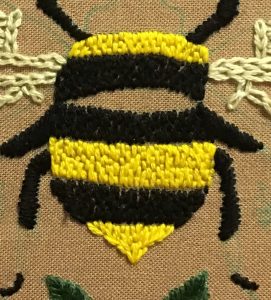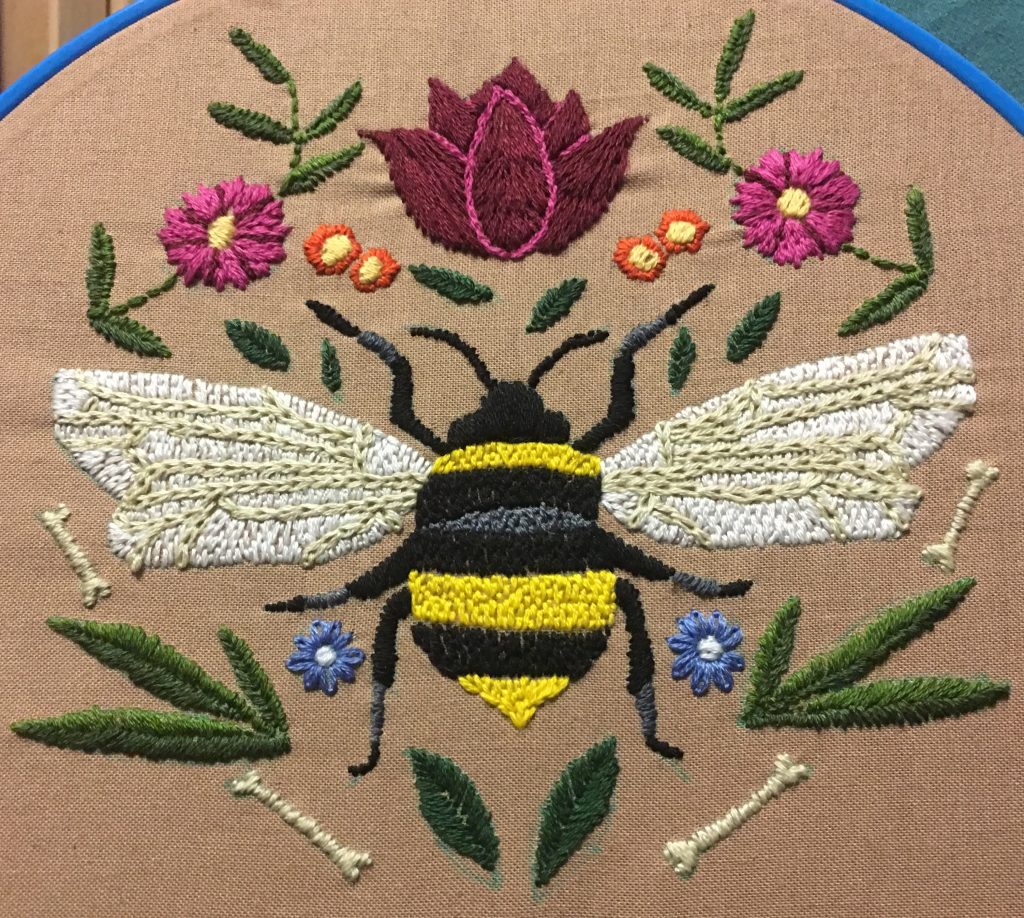So, for my next project, I decided to try something a little more difficult. It had several stitches that I didn’t know how to do and were, quite frankly, rather difficult. The long and short stitch, for example, was rather challenging for me to wrap my head around. I looked up a variety of tutorials on Pinterest and decided to try it out. Once again, here’s my Pinterest board, where I get a crazy amount of inspiration.
I downloaded this pattern from the DMC website here.

Long and Short Stitch
Essentially, the long and short stitch is exactly what it sounds like; an alternation of long stitches and short stitches. In practice, I found the various kind of difficult to work with, as I wasn’t sure how to work through angled stitches. I figured it out, and as you can see I think it went pretty well!
As I continued to work with long and short stitch, I got a lot better. This stitch was used a lot in this pattern to

An example of texture
show texture, and once I got the hang of it, it was quite successful. The clearest example of this can be seen in the body of the bee. The variation in stitch length adds a really nice texture to the body of the bee–it looks fuzzy!
Another stitch that I struggled with in this pattern was the chain stitch. While I have used it before, this pattern called for its use in a very intricate manner. Not only did it require my full concentration, but I also needed to maintain that concentration for a long time–the entire outline of the bees wings. Ultimately, this was a great way for me to stay engaged in this project. On the advanced side of my own personal Zone of Proximal Development, the intricacies of the pattern challenged me and engaged my interest.
Another challenging aspect of this pattern was that there was a lot going on. This is definitely the first pattern I’ve tried that has more than three elements. This one had nearly a dozen different aspects to the design, which was plenty to keep me interested. In the end, all of these elements created a cohesive and, dare I say, beautiful piece of embroidery. Pictured below is the final product.

Leave a Reply